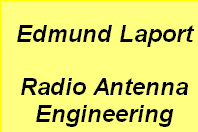

Antentop is FREE e-magazine devoted to Antennas and Amateur Radio an
Special page devoted to
Antenna Installations: Fact and Fiction

Custom Search
|
ANTENTOP- 01- 2018 # 022 |
Antenna Installations: Fact and Fiction |
|
|
|
|
Antenna
Installations: Fact and Fiction |
|
|
|
|
|
Considering that antennas are daily familiars in the
life of the average TV technician, it is quite surprising that
they are also among the least understood items with which he deals.
Some common misconceptions and half truths
concerning them have come to the author's attention in the experience
he has had with antenna installations. |
By Jack Beever,
Jerrold Electronics Corp Credit
Line: Radio and TV News, # 4 1959, pp.: 42, 43, 124. |
|
|
Radio and TV News, # 4 1959 Front Cover |
|
Another point to remember is that
stated front to back ratios must be considered at specific frequencies,
since antenna radiation patterns invariably change with frequency. |
FICTION: A YAGI antenna has many times the gain of a tuned
dipole, such as pair of "rabbit- ears." FACT: If you call three times "many," then it's true. The best YAGI
antennas show gains no greater than 12 dB over tuned dipoles,
which is four times the voltage. The average cut-to-channel YAGI
will have from 8 to 10 dB gain which is from 2.5 to 3.16 times.
The big advantages is the often because the YAGI gets put in a
better place- up on the mast. |
|
|
|
|
|
|
|
|
|
|
Page- 5 |
|
 |
 |
|
 |
|
|
|||
Just for Fun:

Powered byIP2Location.com
Thanks for your time!
Last Updated:
January 2, 2020 21:15







